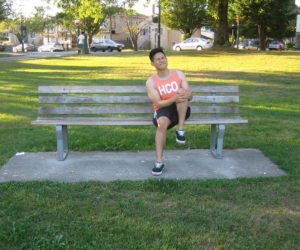A baker’s cyst is also called a popliteal cyst. It is a fluid-filled swelling at the back of the knee due to the swelling and inflammation of the tissues.
Symptoms of baker’s cyst
- Locking or clicking sound can be heard in the joint of the knee
- Pain in the knee and calf when bending or straightening the knee all the way
- Accumulation of fluid around the knee
- Sometimes, the cyst can rupture and leak on the calf and cause severe swelling, redness and pain.
- Tightness or stiffness at the back of the knee
- Swelling of the affected area and becomes severe when standing
Locking or clicking sound can be heard in the joint of the knee.
Causes
- Age-related wearing and tearing of the joints especially in the hips, hands, knees and the big toe or osteoarthritis.
- Inflammatory arthritis caused by the immune system of the body attacking the joints.
- A type of arthritis affecting the big toe due to accumulation of uric acid in the blood or gout.
Treatment
- Rest the affected knee as much as possible for at least 2 days… Avoid flexing or extending the leg to prevent further damage and slows down the healing.
- Ice the affected knee immediately after the injury for at least 15-20 minutes at a time to lessen the inflammation and the swelling around the area. Allow the area to cool down before applying again the ice for another 15-20 minutes.
- Take the prescribed over-the-counter medications such as naproxen, aspirin, acetaminophen and ibuprofen to lessen the swelling and the pain. Avoid giving aspirin to children and adolescents to prevent the high risk of developing Reye’s syndrome which is a dangerous condition that affects the liver and brain.
- Use the prescribed crutch, cane, or a walker to support the area when moving around and it rest the knee for fast healing of the condition.
- Compress the area to lessen the swelling and to stabilize the affected knee. Wrap the area using an elastic bandage or ace wrap, a brace or a trainer’s tape and avoid making it too tight to prevent problems with circulations. If the area under the wrap turns to blue or violet, loosen the wrap.
- While lying down elevate the affected area as high as possible above the level of the heart to lessen the swelling and for proper flow of blood in the area. If not capable of raising the area, keep it parallel to the ground. Another alternative when sleeping, place a pillow under the legs to keep them elevated.
- Perform pain-free strengthening and flexibility exercises with the help of the physical therapist to rehabilitate the affected knee and keep the muscles and joints strong. It prevents weakness and stiffness of the joints and muscles in the future.
FACT CHECK
https://www.webmd.com/arthritis/what-is-bakers-cysts#1
https://www.medicalnewstoday.com/articles/184714.php
https://www.mayoclinic.org/diseases-conditions/bakers-cyst/symptoms-causes/syc-20369950

